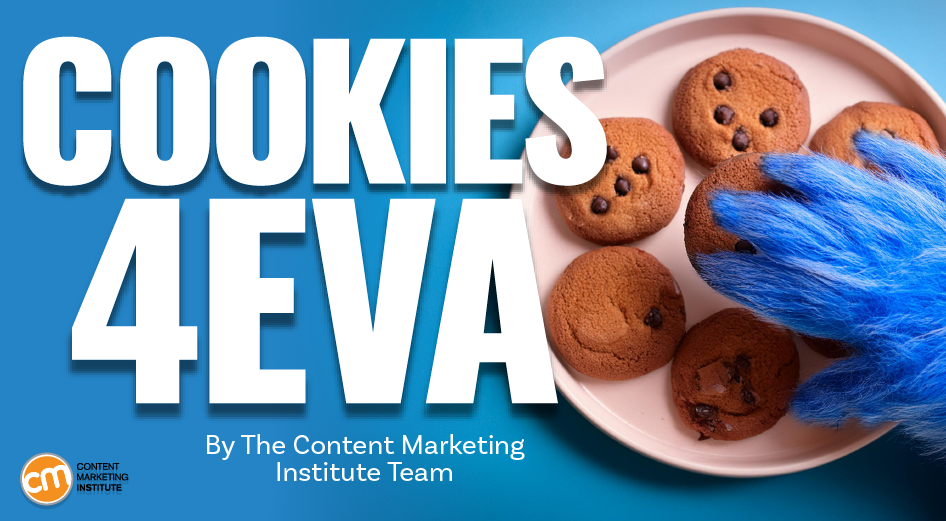
A huge leader dropped out of a major campaign this week.
Oh, you thought we meant that national race in the United States? No, that’s news, but this is news of a different kind.
This week, Google decided to say, “Hey, remember third-party cookies — the thing that we’ve been telling you for four years is going away because we’re developing an alternative. Just kidding, we’re going to keep them after all.”
Can it really just do that? In recent years, entire companies have launched, taking advantage of the “cookieless” future.
Marketing pundits, like CMI’s Robert Rose, have been saying for years the cookieless future is already here, and you need to deal with it. And now, they were wrong.
So, we went back to our chief strategy advisor to ask for his take this week. Watch the video, or read on to learn what he has to say now:
Internet user knows best
The world of digital advertising and marketing shook this week. In a blog post Tuesday, Google announced an “updated approach that elevates user choice.” It’s ending efforts to deprecate the third-party cookie. Instead, it will “let people make an informed choice that applies across their web browsing …”
In other words, the customer knows best.
Wait a minute. I think I heard that before.
[embedded content]
Yes, that’s what the president of Coca-Cola said when acknowledging that New Coke was a bad idea.
But do customers really know?
Cookie saga goes on and on and on
If you haven’t followed the cookie drama, well, it turns out you’re better for it.
In 2020, Google promised to make consumer privacy a priority and get rid of third-party cookies in its internet browser, Chrome. It emphasized how marketers and advertisers could accomplish things such as personalized content, targeted advertising across sites, social media, and even lookalike targeting based on browsing behavior.
If you followed us at Content Marketing Institute, you know I’ve had a lot to say about this.
In May, I wrote about Google’s decision to delay the end of cookies for the third time in as many years. In February, I discussed Google’s Privacy Sandbox and its “promising” experiences for advertisers. In March, the Internet Advertising Bureau (IAB) issued a report saying marketers were nonplussed about the whole thing, and I said that was a mistake.
I’ve been talking about a world without third-party cookies since January 2020, when I noted that Google was going to embark on this grand adventure.
Sheesh, maybe I should have learned over the past four years, but you can’t blame me for repeatedly raising the issue. In January, Google actually started testing a meaningful percentage of browsers without third-party cookies enabled.
Is the cookie drama really over?
Anyway, enough about that. What’s the ultimate takeaway for marketers?
Google’s reversing course about third-party cookies does NOT minimize the importance of getting your first-party data house in order. It does mean personalization based on consumption data across social media, websites, and other media is here to stay.
As a data point, when Apple turned personalized ads into an opt-in feature, only 25% of users said yes. But when users must opt out of tracking, only 23% set their browser that way.
Google will almost assuredly make opting out of tracking an option users must turn on.
Is this good or bad for marketers?
Well, it’s bad for all those technology solutions paving the way for a cookieless future for marketing and advertising.
But ultimately, I think the whole thing might just be a short-term reprieve.
With U.S. elections coming up, depending on which side wins, privacy legislation may finally come up and settle the cookie debate one way or another. Google could have it both ways. It gets the benefits of third-party cookies (meaning you can only target in its ecosystem), and it can safely claim it’s not its fault.
I don’t think the story of the third-party cookie deprecation is dead. But, you know, you may want to keep my record in mind and make up your own mind.
HANDPICKED RELATED CONTENT: Don’t Wait To See How Cookies Crumble; Cook Up a New Data Strategy Now
Cover image by Joseph Kalinowski/Content Marketing Institute
